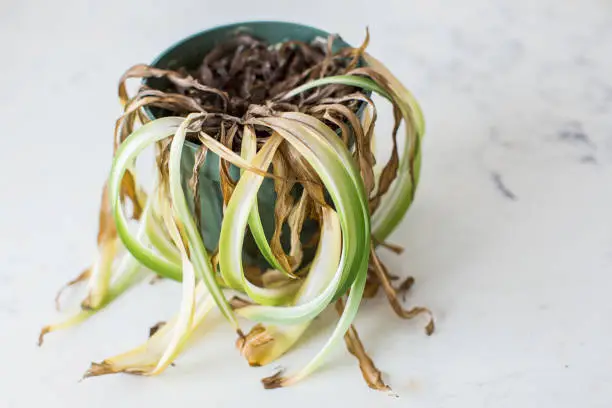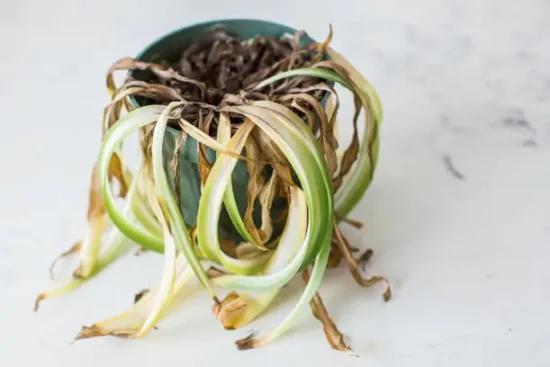
Spider plants (Chlorophytum comosum) are a houseplant favorite for their low maintenance, looks and hardiness. But one question many plant owners and buyers ask is: “How Spider Plant Lifespan?” This manual will answer that query and come up with some insight into what influences a spider plant’s existence span.
Read More Article On ThrillEdge Blog
How Long Do Spider Plants Live?
Under perfect conditions a spider plant can live for 20 to 50 years. That’s a long time for a houseplant to live across generations. But the actual time depends on care, environment and occasional repotting.
What Affects Spider Plant Lifespan
1. Care and Maintenance
- Watering: Spider plants need moderate watering. Overwatering can cause root rot which is the number one cause of death in houseplants. Allow the soil dry out slightly among waterings.
- Fertilizing: Feeding with a balanced houseplant fertilizer during the growing season (spring and summer) can help with longevity.
- Pruning: Removing dead leaves and trimming plantlets helps the plant focus on healthy growth.
2. Environment
- Light: Spider plants love bright, indirect light. Direct sunlight for too long can scorch the leaves, low light can stunt growth.
- Temperature: 65°F to 75°F (18°C to 24°C) is ideal. Spider plants are sensitive to cold and should be kept away from drafty windows or doors in winter.
- Humidity: While adaptable, spider plants prefer slightly humid environment. Dry indoor air can cause leaf tips to brown, but not necessarily shorten the plant’s life.
3. Repotting
- Spider plants are fast growers and their roots can fill a pot quickly. Repotting every 1 to 2 years will give them room to grow and absorb nutrients. Not repotting can cause root bound plants which can affect the plant’s health over time.
4. Pest and Disease
- Spider mites, aphids or mealybugs can weaken a spider plant. Regular check and treatment can prevent long term damage.
- Fungal infections (caused by overwatering) can be prevented by good drainage and not waterlogging.
How to Make a Spider Plant Live Longer
1. Consistency
Spider plants love consistency. Sudden changes in watering, light or temperature can stress the plant and shorten its life. Stick to a routine and make changes gradually.
2. Propagation
Spider plants produce spiderettes or baby plants that can be propagated. Propagation doesn’t extend the life of the parent plant but it means you’ll always have a healthy spider plant in your home even if the original one dies.
3. Don’t Overcrowd
Crowded pots can restrict root growth and make the plant sick. If your spider plant is outgrowing its pot it’s time to repot.
4. Fix Browning Tips
Browning leaf tips are common with spider plants. This is often caused by:
- Over-fertilizing: Reduce frequency or dilute fertilizer.
- Chlorinated or fluoride water: Use filtered or distilled water.
- Low humidity: Use a pebble tray or humidifier.
By fixing these issues you’ll improve the plant’s health and appearance and extend its life.
How to Know When Your Spider Plant is Old
As spider plants get older, they may show some signs of aging:
- Slower Growth: Older plants will grow less if not repotted in a while.
- Fewer Spiderettes: Baby plant production will decrease as the plant ages.
- Thicker Roots: Over time spider plant roots can become woody and thick, that means the plant is mature.
These signs don’t mean the plant is dying but it may need extra care to keep thriving.
Examples of Spider Plants That Lived Long
Many plant lovers have spider plants that have lived for decades with proper care. Some families even pass their plants down to the next generation, that’s how long-lived spider plants can be. These are proof of how spider plants can live long if taken care of.
Advantages of Long-Lived Spider Plants
- Air Purification: Spider plants remove indoor air pollutants like formaldehyde, carbon monoxide and xylene.
- Aesthetics: A healthy spider plant is a great centerpiece or hanging plant for any room.
- Easy to Care: Perfect for newbies and experienced plant owners.
- Budget Friendly: Lasts for decades for the price of one.
Mistakes That Shorten Spider Plant Life
- Overwatering: This is the number one cause of death for spider plants. Check the soil before watering.
- Extreme Temperatures: Don’t place spider plants near heating vents, radiators or drafty windows.
- Ignoring Pests: Left untreated, pests can weaken the plant and shorten its life.
- Wrong Soil: Spider plants like well-draining soil. Compact or too wet soil can choke the roots.
Spider Plant Life FAQs
Q: Can spider plants live forever?
A: No plant can live forever but spider plants can live for decades with proper care. Propagating baby plants will create a cycle of spider plants in your home.
Q: Do spider plants die after flowering?
A: No, spider plants don’t die after flowering. The flowers often produce spiderettes so the plant’s lineage continues.
Q: How do I know if my spider plant is healthy?
A: A healthy spider plant has green leaves, no brown or yellowing, produces spiderettes and grows.
Conclusion
The Spider Plant Lifespan is a proof of its toughness and versatility. With consistent care, addressing problems promptly and right environment, you can enjoy the beauty and benefits of a spider plant for decades. Whether you’re a seasoned plant owner or a newbie, the spider plant’s longevity and low maintenance makes it a great addition to any home.
With its enduring charm and good health, the spider plant really lives up to its reputation as one of the most popular houseplants. Follow the tips in this post and your spider plant will not only live but will thrive for years to come.










Leave a Reply